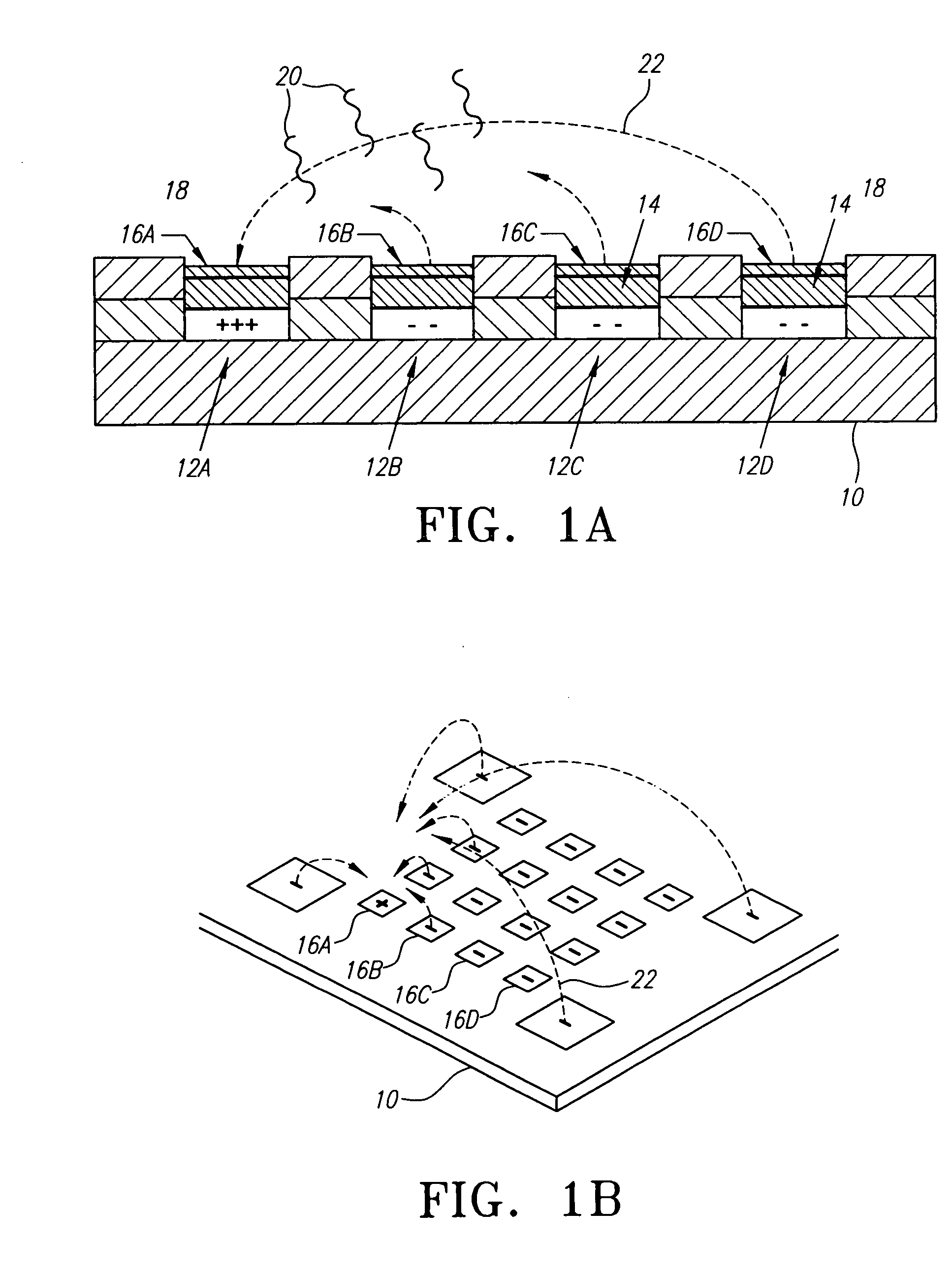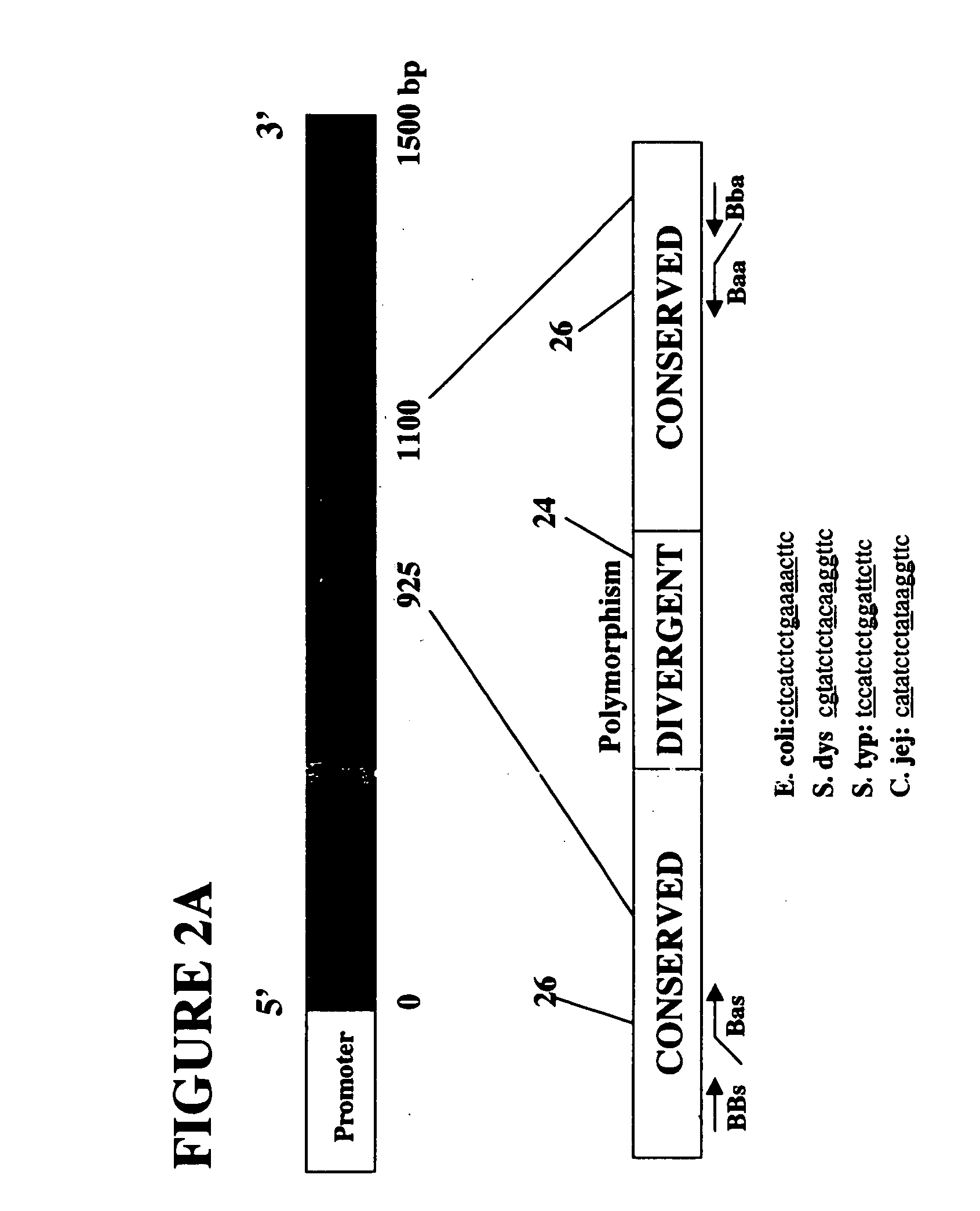Amplification and separation of nucleic acid sequences using strand displacement amplification and bioelectronic microchip technology
a technology which is applied in the field of amplification and separation of nucleic acid sequences using strand displacement amplification and bioelectronic microchip technology, can solve the problems of restricting the information obtainable in any one assay, restricting traditional nucleic acid detection methodologies, etc., and achieves enhanced hybridization of single stranded target species, avoiding uncertainties of amplification rate, and enhancing the effect of multiplex amplification
- Summary
- Abstract
- Description
- Claims
- Application Information
AI Technical Summary
Benefits of technology
Problems solved by technology
Method used
Image
Examples
example 1
[0134] In a preferred embodiment of this invention, a microchip device comprising an electronically controlled microelectrode array is provided for the analysis of target nucleic acids of interest. In contrast to the uniform hybridization reaction environment and passive hybridization used in other microchip devices, the electronic microchip-based devices of the present invention offer the ability to actively transport and hybridize target and / or primer nucleic acids to capture probes at discrete locations on the surface of the microelectrode array.
[0135] Referring now to FIGS. 1A and 1B, a simplified version of the electronically addressable microchip-based hybridization system embodied within this invention is illustrated. Generally, a substrate 10 supports a matrix or array of electronically addressable micro-locations 12 which may be any geometric shape such as square or circular. For ease of explanation, the various micro-locations in FIG. 1A have been labeled 12A, 12B, 12C an...
example a
Parallel Analysis of Single Target Nucleic Acids in a Sample
[0138] In a first example, a parallel analysis of the capture and detection of a single nucleic acid in a test sample was performed using a common locus (16S rRNA) shared by different bacterial species. Multiple comparative analyses of individual samples were used to identify different bacteria types.
[0139] The secondary structural requirements of the 16S ribosomal RNA subunit demands highly conserved nucleic acid sequences in the 16S rRNA gene. Thus, there is limited sequence divergence in this gene between different species of bacteria. Despite the overall high sequence conservation, there are pockets of microheterogeneities within the 16S rRNA gene, which can be exploited to discriminate between closely related bacterial species. See, e.g., C. Woese, 51 Microbiol. Revs. 221-271 (1987).
[0140] The bracketing of these microheterogeneities by conserved sequences provides opportunities to design many primers for consensus ...
example b
Simultaneous Analysis of Multiple Target Nucleic Acids
[0148] In a second example, multiplex amplicon analysis was performed on the electronic microarray of the present invention. In this example, target nucleic acids from multiple patient samples were sequentially addressed to capture sites in order to detect the presence of the human Factor V Leiden (R506Q) gene (which indicates a predisposition to activated protein C resistance and venous thrombosis). In this example, capture probes were designed so as to be specific for alleles of the R506Q gene thereby providing a method to detect allele-specific SDA.
[0149] As explained herein, since each capture site on the open microarray may be individually electronically controlled, multiple samples may be analyzed. Following amplification and position-specific targeting of each sample amplification reaction, the array was evaluated in a site-specific fashion for the presence or absence of targeted amplicons. The test system examined the p...
PUM
| Property | Measurement | Unit |
|---|---|---|
| temperatures | aaaaa | aaaaa |
| pressure | aaaaa | aaaaa |
| wavelength | aaaaa | aaaaa |
Abstract
Description
Claims
Application Information
 Login to View More
Login to View More - R&D
- Intellectual Property
- Life Sciences
- Materials
- Tech Scout
- Unparalleled Data Quality
- Higher Quality Content
- 60% Fewer Hallucinations
Browse by: Latest US Patents, China's latest patents, Technical Efficacy Thesaurus, Application Domain, Technology Topic, Popular Technical Reports.
© 2025 PatSnap. All rights reserved.Legal|Privacy policy|Modern Slavery Act Transparency Statement|Sitemap|About US| Contact US: help@patsnap.com



